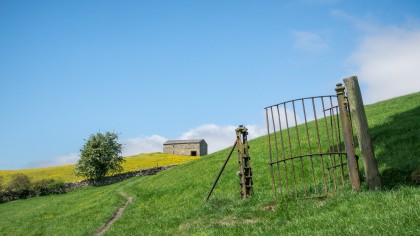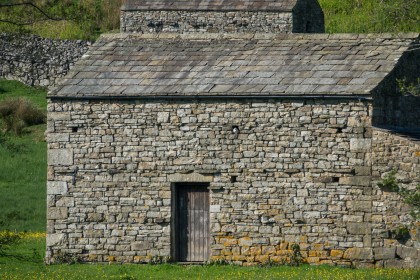The Sony RX10 III was announced in March this year, less than a year after the RX10 II which, according to Sony, the new camera doesn't replace. The most noticeable difference is the inclusion of a variable aperture (f/2.4-4) mega zoom lens, with a reach of 600mm (25x optical and 100x digital zoom), and with this comes a substantial increase in size and weight.
[Update: The RX10 III has been replaced by the RX10 IV, which brings a host of improvements, most notably the increase to 24fps burst shooting and an improved AF system. The core features – including the design and built-in 24-600mm lens remain the same though.]
Like the RX10 II, the RX10 III is aimed at the serious enthusiast end of the market – photographers looking for ultimate image quality and telephoto reach in a bridge-style package.
Features
- 1.0-inch CMOS sensor, 20.1MP
- 24-600mm f/2.4-4 zoom lens
- 4K video capture
The RX10 III has the same 20.1MP 1-inch stacked Exmor CMOS sensor, and offers the same excellent 4K video functionality, as the RX10 II. In fact most features and functions are identical, and the main talking point is the large and impressive Zeiss 24-600mm lens. Only the Canon Powershot G3 X has the same reach, if we compare other bridge cameras with 1-inch sensors, with the much older Panasonic Lumix FZ1000 only going to 400mm.
The variable aperture of f/2.4-4 still makes this a pretty fast lens, certainly compared to the competition, and it boasts hugely impressive minimum focusing distances of 3cm at the wide end and 72cm at the long end.
As with other Sony compact and bridge cameras, a large range of shooting options and photo modes are included, with 3:2, 4:3, 16:9 and 1:1 formats for both raw and JPEG images. Maximum resolution is 5472 x 3648 pixels in its native 3:2 format. Sensitivity ranges from ISO100-12,800, expandable to ISO64-25,600.
Single shot autofocus (AFS), continuous (AFC), direct manual focus (DMF) and full manual focus (MF) are available, with Sony’s very effective focus magnification and focus peaking options making the latter easy to use.
The EVF and tilting rear LCD are both high quality; the latter isn’t a touchscreen, but unless you’re using the camera on a tripod a touchscreen wouldn’t be particularly practical given the size and weight of the camera.
There's no getting around the bulk of the Sony RX10 III. It's very well made and comfortable in the hand, but I suspect many more casual users will be deterred by its size (and price) and, if they want such long telephoto reach, may opt instead for the Canon Powershot G3 X or possibly the Panasonic Lumix FZ330/ FZ300, which has a smaller sensor but also offers 4K shooting, and impressed us last year. The Canon suffers from a slower lens and no included EVF by comparison, but the Lumix FZ330/ FZ300 does benefit from a constant f/2.8 aperture, albeit with a much smaller sensor.
However, if you want the ultimate image quality in a bridge camera, it's hard to look beyond the class-leading performance of the RX10 III's Zeiss Vario-Sonnar T* lens, and I'm sure enthusiasts looking for more reach and a highly specified camera will be attracted to this. Whether they'll be prepared to pay the £1,250 ($ 1,500, AU£2,150) price tag is another matter. That price is likely to fall post-launch, but at the moment it's around double the cost of both the G3 X and the Lumix FZ1000 (the Lumix FZ330/ FZ300 is cheaper again). That said the RX10 III is in a league of its own in some respects, so it's likely to find a market, albeit a niche one.
Build quality and handling
- Dust- and moisture-resistant
- Comfy handgrip
- Weighs 1095g
The first thing I noticed when I took the Sony RX10 III out of its box was just how large and weighty it is compared to other bridge cameras I’ve used. At a little over a kilo in weight (1050g or 2.3lbs with battery and SD card) it feels more DSLR like in-hand. It measures 132.5 x 94.0 x 127.4mm (5.25 x 3.75 x 5.12 inches), and feels substantially larger and heavier than the likes of the Canon G3X. Much of this is down to the sizeable glass of the 24-600mm equivalent, 72mm diameter lens.
Although plastic-feeling, the build is reassuringly solid and its generous, protruding-front grip and rounded body style means you’re able to grip the camera securely and comfortably. Those with small hands may find the grip a little too large, but it feels in proportion to the size of the camera. I found the ergonomics very good, with buttons and dials falling in the right place for my hands.
The on/off switch is toggle-style, and is incorporated into the shutter button on top of the front grip; it’s easy to access and clicks reassuringly. A lever to the front of this allows you to zoom the lens. The shutter button is also threaded, meaning you can use an old-style cable release. The RX10 III powers up pretty quickly, although there’s inevitably a short delay while the lens extends to its start-up position of 24mm.
An aperture ring is included to the rear of the lens, and can be de-clicked for video use
The mode dial (left) and exposure compensation dial (right) both have a textured side and just the right amount of resistance, making them easy to adjust precisely. Two customizable function buttons, an LCD light and the pop-up flash button are also included on the right, and behind these is a small LCD panel that displays key settings. The small but solidly built pop-up flash and hotshoe complete the top plate layout.
An aperture ring is included to the rear of the lens, and can be de-clicked for video use. There are also two textured rings for zoom and focusing. I found it easier to zoom in small increments using the lens ring rather than the lever on the front grip. I found the focusing ring responsive and easy to use, with a conveniently located focus hold button to the left of the lens. A focus mode switch is included on the bottom left of the camera body; I found it slightly fiddly, but quick access to this feature is welcome.
Much of the rear of the RX10 III is taken up by the impressive 1,228,800 dot, tilting 3-inch LCD screen. The XGA OLED electronic viewfinder is excellent and boasts a 2,359,296 dot resolution. It’s responsive, clear and bright, and works well with glasses. It has 0.7x magnification, an eye sensor to allow automatic switching between EVF and LCD, and a generous diopter adjustment. A lens hood is included, as well as a pinch-style lens cap.
Menu and movie buttons sit either side of the EVF. The rear control dial and control wheel operate smoothly and are easily accessed, enabling you to select and adjust various menu items and settings. The control wheel and center button also enable you to change the placement and size of the focus area when using flexible spot AF. AE lock, quick function, playback and delete buttons complete the line-up; the latter can also be used as a third custom function button.
Performance and image quality
- Lens is nice and sharp
- AF and be a bit sluggish in poor light
- Excellent results from the 20.1MP 1-inch sensor
Based on my experience with the RX10 II version of the camera I was expecting the new 24-600mm lens on the Sony RX10 III to impress, and I wasn't disappointed. The lens performs extremely well throughout its zoom range; details are perhaps not quite as crisp as from the RX10 II's lens, but given the far greater reach of this lens that's not surprising.
At most focal lengths the lens is remarkably sharp wide open. At its wider end I did notice softness at the far left side of the frame, suggesting possible decentering in my review camera, as the right side was tack-sharp. However, at telephoto focal lengths, the image is impressively detailed across the frame, right up to 600mm.
Sharpness increases marginally when stopping down slightly, but there's very little in it. Diffraction becomes more noticeable by f/11, although with a little more sharpening applied details are still very good. I would avoid going much above this if possible – by f/16 there's a noticeable fall-off in quality, as you'd expect.

Click here for the full-resolution image
Click here for the full-resolution image

Click here for the full-resolution image
Out of focus areas are rendered pleasingly, although f/2.4 is only available up until 35mm, with f/4 the widest aperture available above 100mm. This does mean that isolating subjects from their background can be a challenge at times, but the RX10 III still beats most of the competition in this respect. Distortion and chromatic aberration are both very well controlled throughout the range; I struggled to notice any examples of either, after photographing a range of subjects in varied conditions.
The lens is able to resolve both close and distant details, and its impressively close focusing distances of 3cm at the wide end and 72cm at the long end make it extremely versatile. Most potential purchasers of this camera are likely to shoot primarily in raw, but I was also impressed by the quality of the RX10 III’s JPEGs. Colours are punchy and pleasing, with plenty of options for customization, and resolution and dynamic range are both very good.
Even at higher sensitivities I was impressed with the quality of the JPEG files. I found that using noise reduction at its lowest setting gave a good compromise between detail and noise, with files very clean and detailed up to ISO1600; the raw files do have more detail but the difference is surprisingly small. Above ISO1600, JPEG quality is still remarkably good, with very manageable noise levels, and I’d have no hesitation making A3 prints from files at ISO6400. Above this the files are certainly usable, but I wouldn’t want to be making large prints.

Click here for the full-resolution image

Click here for the full-resolution image

Click here for the full-resolution image
Metering is accurate, and I was impressed with the dynamic range of the sensor, for both raw files and JPEGs, even without utilizing any of the HDR options. Auto white balance (AWB) is very accurate in sunny conditions, but tends to be a little on the cool side in shade, with a slight magenta bias; in such conditions selecting Shady gives a pleasing image, if very slightly on the warm side.
Autofocus is a bit of a mixed bag with the RX10 III. At wider focal lengths the AF is pretty snappy, working well for both still and moving subjects. At the longer end of its range, however, AF is really very slow, even with still subjects; it’s accurate, once it’s found its target, but the lens is prone to hunting.
Not surprisingly, this is exacerbated if you’re trying to track a fast-moving subject at longer distances: my usual test, trying to focus on my dog as it ran towards me, was definitely a step too far for the RX10 III. For closer and slower-moving subjects I found I could get good results using centre lock tracking and the slow burst rate. The lack of blackout during continuous shooting is a definite bonus, and makes it far easier to follow your subject.
Click here for the full-resolution image

Click here for the full-resolution image

Click here for the full-resolution image
Sony’s SteadyShot image stabilization is very effective and, with Auto ISO enabling you to set a minimum shutter speed, you can customize the settings to ensure camera shake shouldn’t be an issue. It’s a big camera, though, and a long lens, particularly when extended, so I found a minimum setting of 1/125 sec was a safe option at longer focal lengths; at the wider end 1/25 sec was readily achievable.
Although the RX10 III is suited more to enthusiasts, Sony has included a wide range of scene modes, creative styes and picture effects, which are fun to use and will no doubt be welcomed by some users. At the opposite end of the scale it’s good to see options such the ability to use the self-timer in conjunction with bracketing, as well as many other features found on Sony’s higher-end system cameras.
Video enthusiasts won’t be disappointed with an excellent range of filming options, with 4K and HD modes and the ability to extract 8MP stills from 4K movies. The High Frame Rate (HFR) feature is a great option, enabling you to create slow-motion videos; and I was also very impressed with the camera’s ability to handle mixed and contrasty light when shooting movies.
Verdict
The Sony RX10 III is thoroughly enjoyable to use in most situations, with a superb 24-600mm f/2.4-4 zoom lens and a bright and detailed electronic viewfinder. It’s packed with features and functionality for both stills and video enthusiasts, and delivers class-leading stills and movie image quality.
It’s let down somewhat by its autofocus, and some may be put off by its relatively large size and weight; however, as long as action photography isn’t high on your list the RX10 III is hard to beat as an all-in-one and travel camera, albeit one that comes at a price.